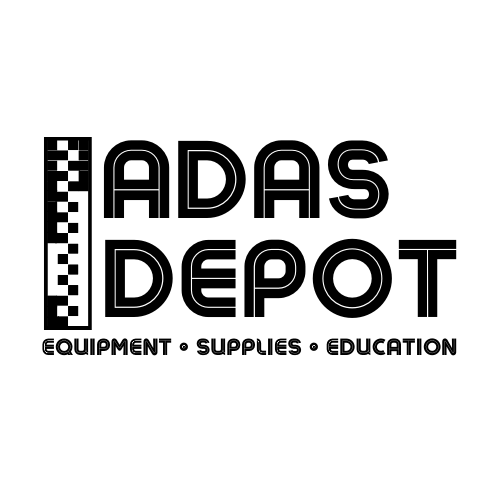When it comes to replacing a windshield, many drivers are unaware of the importance of recalibrating their vehicle’s ADAS systems. This blog post dives into why windshield replacement often necessitates ADAS recalibration, ensuring your vehicle’s safety features function correctly.

ADAS Systems Impacted By Windshield Replacement
ADAS encompasses a variety of electronic systems that assist drivers. These systems rely on an array of sensors, cameras, and other technologies strategically placed around the vehicle, including the windshield. The primary sensors often affected by windshield replacement are:
- Forward-facing cameras: Mounted behind the windshield, these cameras play a vital role in monitoring the road ahead. They are responsible for functions such as lane-keeping assistance (LKA), adaptive cruise control (ACC), and even automatic emergency braking (AEB). These are the typical ADAS sensors we think of, however they are not all of the sensors impacted by a windshield replacement.
- Rain sensors: These sensors detect rain on the windshield and automatically activate the windshield wipers, ensuring the driver’s vision is not compromised.
- Light sensors: Positioned to detect the amount of ambient light, these sensors adjust the vehicle’s headlights and dashboard illumination.
Why Recalibration is Essential
When a windshield is replaced, it’s almost like getting a new pair of glasses. The windshield’s thickness impacts its optical characteristics, as does the quality of the materials. So the forward facing camera and the other sensors do need to be re-aligned and recalibrated to compensate for this. Even minor discrepancies in sensor alignment can lead to significant errors in ADAS functionality. For instance, a misaligned forward-facing camera with a new windshield in front of it might not correctly interpret lane markings, leading to incorrect lane departure warnings or even failure to detect an impending collision.
The Risks of Skipping Recalibration
Neglecting to recalibrate ADAS systems after windshield replacement can compromise vehicle safety. Misaligned sensors can lead to:
- False alarms: Incorrect lane departure warnings or unnecessary activation of emergency braking systems.
- System failure: Critical safety features such as forward collision warning (FCW) and automatic emergency braking (AEB) may not function when needed. In other instances the vehicle may drift across lanes if the vehicle cannot accurately sense the lanes it is in, due to faulty lane departure warning (LDW) or lane keep assist (LKA) systems.
- Reduced driver confidence: Inconsistent ADAS behavior can lead to driver confusion and reduced trust in these systems.
Moreover, skipping recalibration can leave you liable for damages resulting from ADAS malfunctions. Given the potential risks, it’s clear why recalibration is not just recommended but essential.
Are You Looking to Perform Front Camera Calibrations?
At ADAS Depot, we offer a variety of packages specifically for calibrating front cameras. For example:
Autel IA900 Stationary Lane Departure Warning Package
Autel MA600 Mobile Lane Departure Warning Package
A lot of our customers don’t have prior ADAS experience. If you are wondering where you can get the necessary training to be able to perform ADAS calibrations, such as the front camera calibrations we have discussed, give us a call at (925) 566-8545.

Leave a Reply